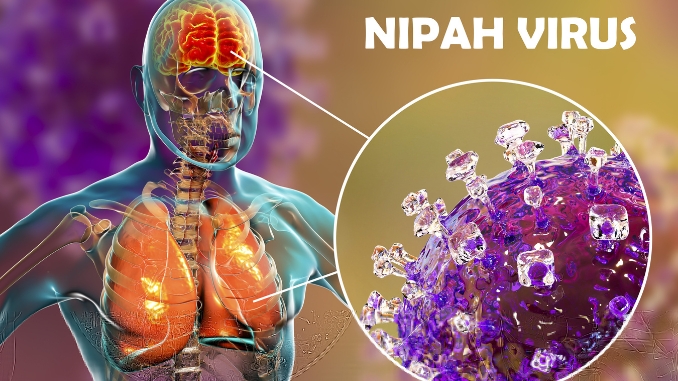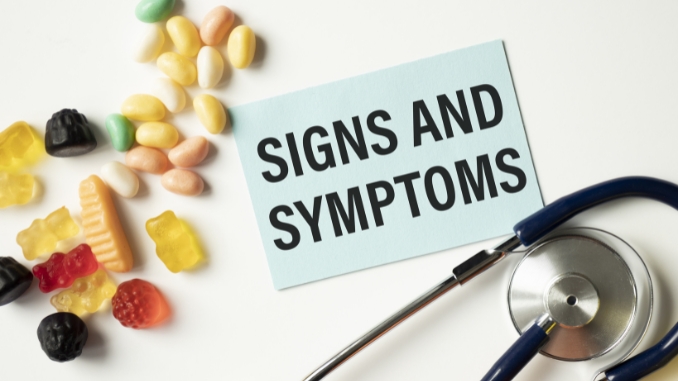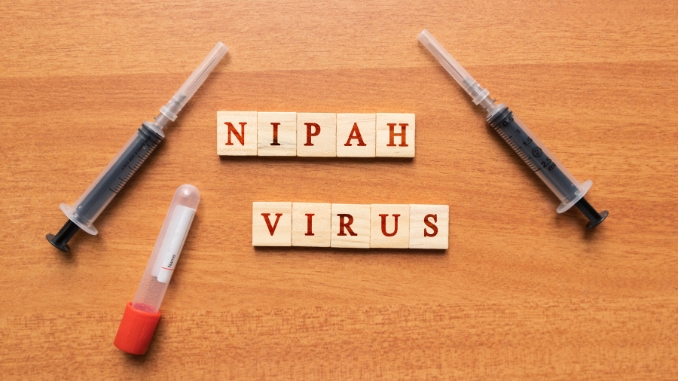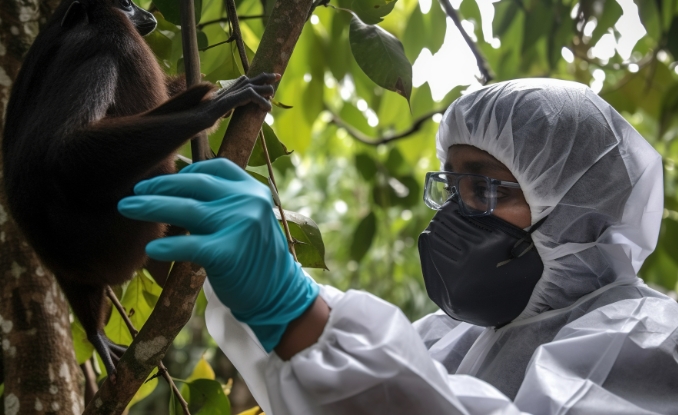Discovering the symptoms of the Nipah virus is crucial for early detection and timely treatment. This article provides everything you need to know about Nipah virus symptoms. From the initial signs to the more severe manifestations, we break down the key indicators to watch out for. Stay informed and learn to identify common symptoms such as fever, headache, respiratory issues, etc.
Awareness of Nipah virus symptoms empowers you to take necessary precautions and seek medical help promptly, ensuring the best possible outcome.
Nipah Virus Overview
Nipah (a Malaysian village where the first outbreak was reported), a zoonotic virus (spread between animals and humans), was first discovered in 1999 during a disease outbreak in pigs and among pig farmers in Malaysia and Singapore. The outbreak resulted in nearly 300 human cases and more than 100 deaths.
The virus was first identified in samples from sick pigs and humans using a technique called electron microscopy. This technique allowed scientists to see the virus particles under a microscope.
Once the virus had been identified, scientists began investigating how it spread. They found that the virus was spreading from bats to pigs to humans.
Since the 1999 Nipah virus outbreak, the virus has been identified in several other countries in Asia, including Bangladesh, India, and Cambodia. The virus is considered a serious public health threat, as it is highly contagious and has a high fatality rate. And just recently, India witnessed its fourth outbreak of Nipah. This only shows how contagious the virus was. Detailed below.
4th Wave: Nipah Virus in India Latest News
On August 30, 2023, Kerala state in India witnessed the onset of its fourth outbreak of Nipah virus disease. As of September 18, 2023, this outbreak has already confirmed 6 cases, tragically claiming the lives of two individuals. A series of preventive measures have been implemented in an earnest effort to mitigate the spread of this deadly virus.
Moreover, in Kozhikode, educational institutions and offices have been temporarily shuttered, and certain regions within Kerala state have seen restrictions placed on public movement. These actions are also part of a broader strategy to contain the outbreak and safeguard public health.
Transmission and Risk Factors
The Nipah virus (NiV) is not considered to be an airborne virus. This means it does not spread through respiratory droplets in the air for long periods. However, it can be spread to people from bats directly or through contaminated food or water.
It can also spread from person to person through respiratory droplets and body fluids. These droplets can contain the virus, and if someone inhales them, they can become infected. The virus is also transmitted through contact with the saliva, urine, feces, or blood of infected animals such as bats and pigs. Humans can also be infected by direct contact with infected pigs or their fluids.
Nipah virus occurs primarily through spillover events from its natural reservoir host and the first infected animal, fruit bats, to humans. These bats shed the virus in their saliva, urine, and feces, which can contaminate fruits or date palm sap. When humans come into contact with these contaminated materials, especially when consuming raw date palm sap or fruits that bats have nibbled on, they can contract the virus.
Nipah virus can also be spread by consuming contaminated raw date palm sap. Date palm sap is a famous drink in some parts of Asia, and it is thought to have played a role in the spread of the virus during the 1999 Nipah virus outbreaks.
The natural hosts of NiV are infected fruit bats, but pigs can also become a carrier. This virus can cause severe illness and death in both animals and humans.
Person-to-person transmission is most common among family members and caregivers of Nipah virus-infected people and in healthcare settings.
Signs and Symptoms
The first sign of Nipah virus infection is typically a fever, which can be accompanied by other flu-like symptoms such as headache, muscle pain, vomiting, cough, sore throat, diarrhea, and difficulty breathing. These symptoms usually appear within 4 to 14 days of exposure to the virus.
Some people may not experience any symptoms at all like what the public experienced with COVID. In contrast, others may develop a severe illness that can lead to death.
Severe Cases of Nipah Virus may Include:
1. Acute Respiratory Infection and Distress
This is the most common form and can range from mild to severe. In some cases, respiratory symptoms can progress to acute respiratory distress syndrome (ARDS). This is a life-threatening condition in which the lungs cannot provide enough oxygen to the body. ARDS is characterized by severe difficulty breathing, low oxygen levels in the blood, and also fluid accumulation in the lungs.
2. Atypical Pneumonia
This is not caused by the most common bacteria that cause pneumonia. Viruses, bacteria, or fungi can cause this. The symptoms of atypical pneumonia caused by the Nipah virus are similar to the symptoms of pneumonia caused by other viruses, such as:
-
- Cough
- Shortness of breath
- Chest pain
- Fever
- Chills
- Muscle aches
- Headache
However, atypical pneumonia is more likely to be severe. It is more likely to cause respiratory failure.
3. Persistent Convulsions
Convulsions or seizures that last more than five minutes or occur in rapid succession are a serious complication of Nipah virus infection and can be a sign of encephalitis. In addition, other neurological complications of Nipah virus infection can include:
-
- Altered mental status
- Movement disorders
- Speech difficulties
- Memory loss
- Personality changes
Epilepsy can also develop in some survivors of Nipah virus infection.
4. Acute Encephalitis
Nipah virus encephalitis is a serious condition that involves inflammation of the brain. Symptoms include:
-
- Fever
- Headache
- Confusion
- Disorientation
- Seizures
- Coma
5. Severe Pneumonia
This can also occur in some cases of Nipah virus infection and can lead to respiratory failure. Severe pneumonia is a serious complication of the Nipah virus and is more common in adults than children.
Symptoms of severe pneumonia include:
-
- Difficulty breathing
- Rapid breathing
- Wheezing
- Chest pain
- Coughing up blood
- Low oxygen levels in the blood samples
6. Residual Neurological Consequences
This is a long-term neurological problem that can remain after a person has recovered from Nipah virus infection.
Some of the most common residual neurological consequences of Nipah virus infection include:
-
- Seizure disorder
- Cognitive impairment
- Speech and language disorders
- Visual impairment
- Hearing impairment
- Fatigue
Furthermore, in some cases, people infected with the Nipah virus may not experience any symptoms at all. However, even people who do not have symptoms can still spread the virus to others.
7. Death
The infection can be fatal in up to 70% of cases. As the infection progresses, more unbearable symptoms may develop, which can be life-threatening and potentially result in death if symptoms are ignored. It’s crucial to recognize the early signs of Nipah virus infection and seek medical attention to reduce the risk of death associated with this deadly disease.
It is important to note that not everyone who is infected with Nipah virus will develop severe symptoms or die. However, since the virus is highly contagious, we should take extra precautions and be responsible.
Common Side Effects and Illnesses:
- Asymptomatic Infection – The infection can manifest in various ways among individuals. Notably, some individuals who contract the virus may remain completely asymptomatic. In these cases, they become carriers of the virus but do not exhibit any noticeable symptoms or signs of illness. This silent carriage of the virus can be particularly concerning as carriers can unknowingly transmit the virus to others.
- Other Neurological Symptoms – In addition to encephalitis, the infection can give rise to various additional neurological symptoms. These may include muscle weakness, which can hinder an individual’s mobility and coordination. A stiff neck is another possible neurological symptom, often associated with inflammation of the brain and spinal cord membranes, known as meningitis.
- Gastrointestinal Symptoms – Some individuals infected with the Nipah virus may experience gastrointestinal symptoms. These can encompass nausea, which often leads to sickness and discomfort, and also abdominal pain, ranging from mild discomfort to severe cramping. Gastrointestinal symptoms may contribute to the discomfort and distress experienced by those with Nipah virus infection.
- Multi-Organ Involvement – In severe cases, the virus can affect multiple organ systems in the body. This can lead to a complicated and challenging clinical picture, as different organs may exhibit various symptoms and complications. Organ involvement can include liver dysfunction, kidney problems, and also heart-related issues.
Treatment for Nipah Virus
There is no specific treatment for NiV infection. Treatment is supportive and includes managing the patient’s symptoms. This may include providing oxygen therapy, fluids, and also medication to control seizures and fever.
And with the help of Enzyme Linked Immunosorbent Assay (ELISA), the virus is detected in people who have been infected with Nipah, even if they are no longer experiencing symptoms. This is because antibodies remain in the blood for some time after an infection has cleared.
Moreover, ELISA is a valuable tool for diagnosing Nipah virus, as the early symptoms of the disease can be vague and similar to those of other illnesses. By detecting antibodies to the Nipah virus, ELISA can also help doctors confirm a diagnosis and provide appropriate treatment to patients.
Survival, Disease Control and Prevention
Nipah virus (NiV) infection is often fatal, with a case fatality rate of 40% to 75%. There is currently no vaccine or specific treatment for NiV. The mainstay of NiV management is supportive care, but early diagnosis and intervention significantly enhance recovery chances.
The primary goal of treatment for Nipah virus is supportive care. This includes providing fluids and electrolytes, managing complications, and preventing the spread of the virus to others.
In addition, some infected people with Nipah virus will recover without any long-term problems. However, others may experience long-term neurological complications, such as personality changes and memory loss.
Prevention
According to the Centers for Disease Control, prevent Nipah virus through:
- Avoiding contact with sick bats or pigs
- Avoiding consumption of raw date palm sap
- Practicing good hygiene habits. This includes frequent washing of your hands with soap and water.
- Avoid contact with the eyes, nose, and also mouth.
Anyone can be at risk for NiV infection, but people who live in or visit areas where the virus is present are at increased risk. This includes people who work with bats or pigs and consume raw date palm sap.
If you have any symptoms of Nipah virus infection or have been in contact with someone infected, it is important to seek medical attention immediately.
The World Health Organization also recommends washing fruits and vegetables and cooking meat thoroughly before consuming them.
Control
- Identifying and isolating infected people. This will help to control the spread of the virus to other people.
- Tracing contacts of infected people. This also helps identify people who may have been exposed to the virus and monitor them for signs of infection.
- Educating the public about NiV prevention and control measures. This will help to raise awareness of the virus and also reduce the risk of infection.
In addition to these individual and community measures, governments and public health agencies can also play a role in preventing and controlling NiV outbreaks. This includes:
- Surveillance for NiV in animals and humans. This will help to identify early signs of an outbreak and allow for rapid response measures.
- Research on NiV vaccines and treatments. This will also help to develop new tools to prevent and treat NiV infection.
Periods of Survival of Nipah Virus
- Bat urine: Up to 4 days
- Fruit juice: Up to 3 days
- Surface of fruit (palm sap): Up to 24 hours
- Fomites: Up to 48 hours, depending on the conditions. It is most stable in cool, moist conditions. It can survive longer on porous surfaces like wood and fabric than on non-porous surfaces like metal and plastic.
Nipah virus is rapidly inactivated by desiccation (drying out) and by heat. It is also sensitive to the most common disinfectants.
To prevent infection with Nipah virus, it is necessary to clean and disinfect surfaces that may have been contaminated. This is especially important in healthcare settings and in other areas where people at high risk of infection may be present.
Here are some tips for cleaning and disinfecting surfaces to prevent Nipah virus transmission:
- Use a detergent or soap to clean the surface. This will remove dirt and debris, which can harbor viruses and bacteria.
- After cleaning, disinfect the surface with a disinfectant that is effective against Nipah virus. Some common disinfectants that are effective against Nipah virus include chlorine bleach, hydrogen peroxide, and also quaternary ammonium compounds.
- Be sure to follow the instructions on the disinfectant label carefully.
- Pay special attention to cleaning and disinfecting surfaces frequently touched, such as doorknobs, light switches, and countertops.
Furthermore, it is important to note that these are just estimates. The survival time of Nipah virus can vary depending on several factors, such as the temperature, humidity, and also the presence of organic matter.
People At Risk
- People who live in or travel to areas where the Nipah virus is known to occur – Nipah virus is most common in Southeast and South Asia, but cases have also been reported in other parts of the world, such as Australia and Africa.
- People who have close contact with infected fruit bats – Fruit bats can spread the virus to other animals, including pigs and humans. People who live near fruit bat roosts or who handle fruit bats for work or recreation are at increased risk of infection.
- People who have close contact with infected pigs – Pigs can become infected with Nipah virus from fruit bats, and they can then spread the virus to humans through their saliva, urine, and feces. People who work on pig farms, slaughter pigs, or eat raw or undercooked pork are at increased risk of infection.
- People who have close contact with an infected person – Nipah virus can be spread from person to person through contact with infected saliva, urine, feces, or other bodily fluids. Healthcare workers who care for Nipah virus patients are at increased risk of infection, as are family members and other caregivers.
Other people who may be at increased risk of Nipah infection include:
- People with weakened immune systems. People with HIV/AIDS or other chronic illnesses or who are taking immunosuppressive medications are more likely to develop serious illnesses from Nipah virus infection.
- Children are more likely to be infected with Nipah virus than adults and more likely to develop serious illness.
Conclusion
To sum up, understanding the Nipah virus symptoms is crucial for early detection and containment of this deadly disease. Individuals living in or near regions where Nipah virus outbreaks have occurred must remain vigilant and seek immediate medical attention if they experience any of these symptoms.
Additionally, public health awareness and education about Nipah virus symptoms are essential in preventing its spread and minimizing the potential for future outbreaks. Knowledge and vigilance are also our most powerful tools in the fight against this devastating virus.
Stay informed, stay safe, and above all, prioritize your health and your community’s well-being.

Rick Kaselj MS, is a leading kinesiologist and injury specialist as well as co-creator of the best-selling Unlock Your Hip Flexors program. Rick creates exercise programs that help people heal injuries and eliminate pain, so they can go back to living a full, active, healthy life.








